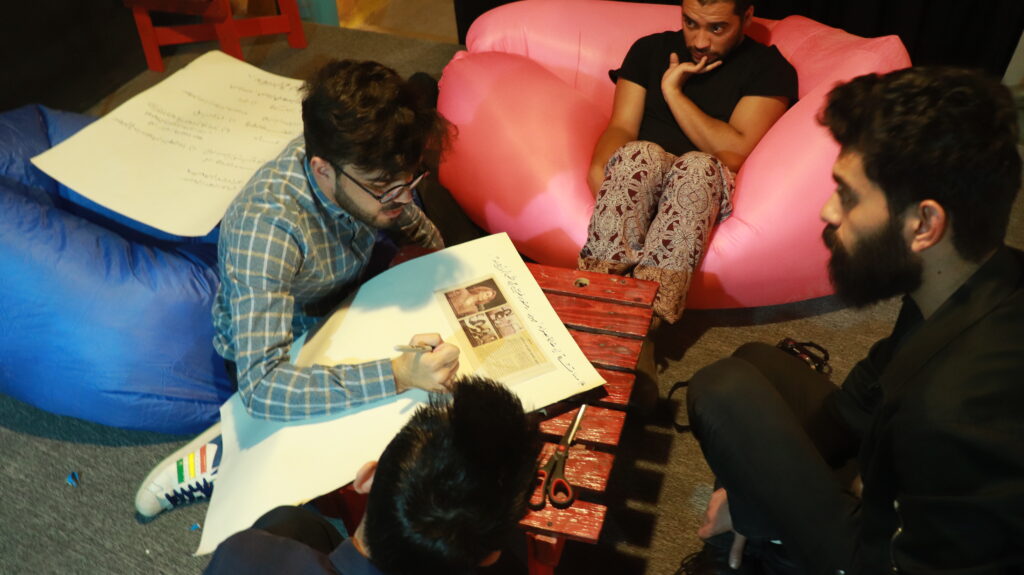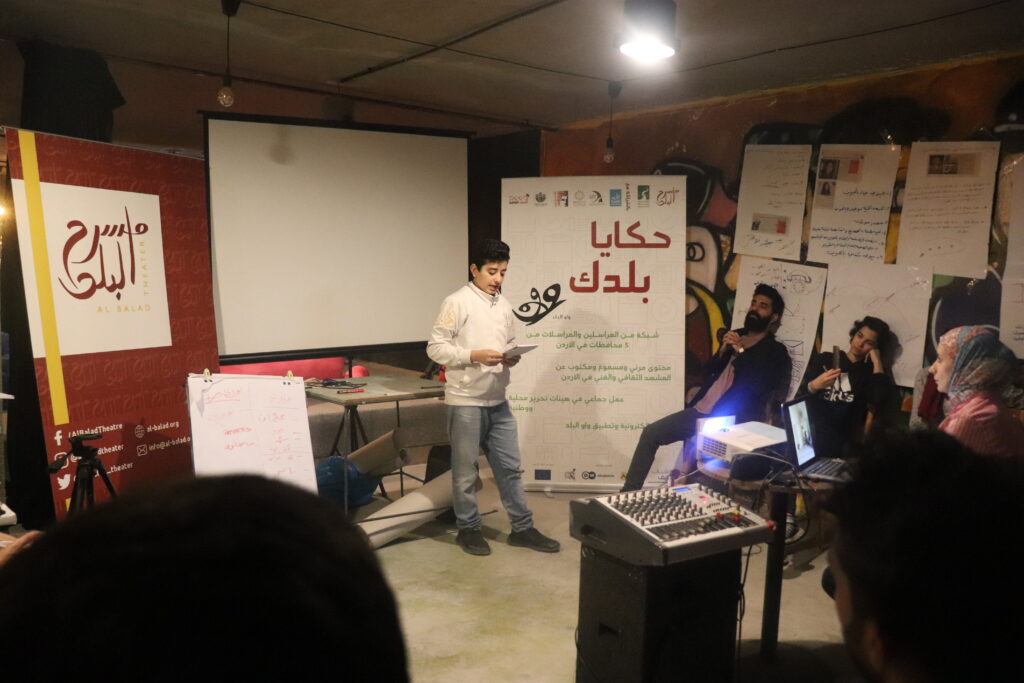Hakaya Baladk - Waw Al Balad Magazine
The Waw Al-Balad Magazine is a digital magazine issued by Al-Balad Theater. It specializes in arts and culture and is interested in spreading knowledge about artistic and cultural activities in Jordan as well as the people working in this vast field, in addition to publishing critical artistic content.
The first version of the magazine was published in 2009 and continued in print until 2013, after which it was converted to an electronic format. The Waw Al Balad magazine was relaunched in the second half of 2020 in the form of a website and application for smart devices, after the completion of our “Hakaya Baladk” program. Hakaya Baladk is a training project to increase the capabilities of young men and women from various governorates in Jordan in methods of preparing content, accompanied by a group of people who specialized in journalistic writing, photography, and audio recording. This project was followed by providing a group of small grants to sponsor the production of diverse content dealing with local cultural and artistic topics, as this content has formed the basis for launching the magazine.
The magazine consisted of a public network of young correspondents in five governorates who have been trained to produce content for the magazine in Arabic and English, related to culture and arts. The magazine includes several sections: (1) the events agenda, where cultural events are collected in one place which makes it easy for the follower to access them and the main information about them, (2) the institutions guide concerned with providing a list of cultural institutions and spaces in Jordan that constitute a reference for those interested in communicating with these entities, (3) an artists’ guide which provides introductory articles about Jordanian artists, including their upbringing, artistic vision, and works, (4) special files containing artistic articles, visual videos, and specialized and critical audio recordings.



Why the letter waw?
The letter waw in the Arabic language has many uses and characteristics, the most important which are the waw of conjunction, the waw of ‘oath’, the waw of accompaniment , and the waw of the condition. The conjunction waw includes grouping, harmony, and love; The waw of oath obligates a person and people to undertake a pledge that they take upon themselves, the waw of accompaniment implies presence for the other, and the waw of condition describes the person’s condition or state. Finally, it is said that there is something called the eighth wow, which always comes before the number 8 and not the other numbers. Perhaps, for this reason, this first issue took 8 years of thought, effort, and cooperation among a large number of people for “Waw Al-Balad” to become a reality
We named the magazine Waw Al-Balad to be like the letter ‘Waw’. it urges and encourages readers to gather, harmonize, commit, and go out together to enjoy what Jordan offers us in terms of cultural and artistic events that enrich the soul and bring hope to life, in the hope that we will all always be in better conditions. Waw Al-Balad magazine believes in the importance of the cultural scene and its activities as a necessity for self-discovery, openness to others, commitment to heritage, and dissemination of knowledge.


Another offspring of Hakaya Baldak has been our partnership with Jordanian directors: Widad Shafakoj, a Jordanian humanitarian activist and award-winning filmmaker, and Darrin J Sallam, an Oscar nominated writer and director for Farha. With them, we facilitated 3 workshops a year from 2016-2024 for young Syrian refugees, mostly young women, in urban refugee communities as well as al-Azraq and al-Zaatari refugee camps. We provide them with the tools to learn all the principles of filmmaking––from crafting a text to filming techniques to editing. We allow the young filmmakers complete artistic liberty in their choice of film topic, with gentle guidance of our mentor director, which allows them the opportunity to explore daring themes. In the workshop spaces, you can witness how important each film is to the participants and their sense of artistic ownership. From the workshops, we produce 6 short films a year.


